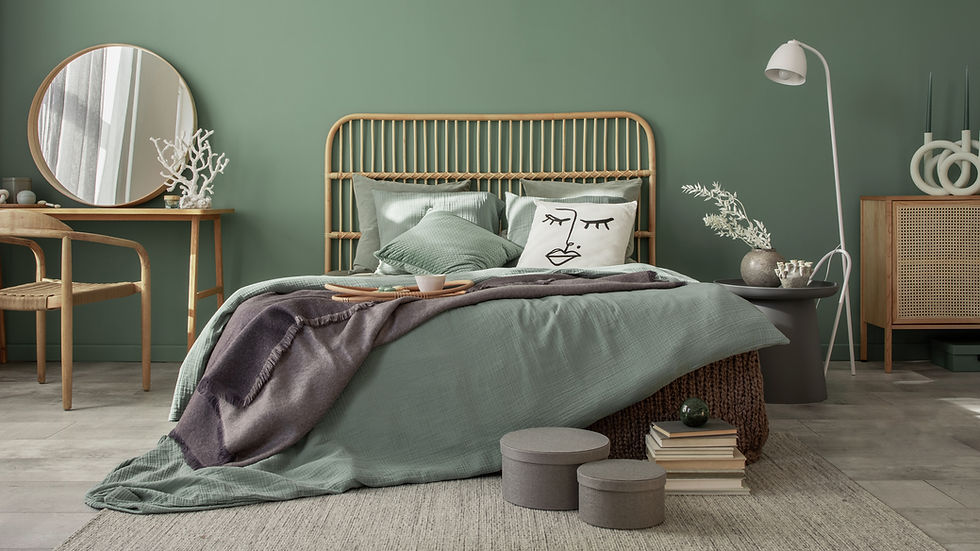Personal Trainer’s Guide: 5 Practical Habits to Reduce Plastic Chemical Exposure in the Gym
- Julia Zubko

- Sep 13
- 3 min read
We have been living surrounded by polymer materials for nearly a hundred years. Think about all those plastic utensils, boxes, packaging, carpets, clothes, water-repellent and temperature-resistant coatings, and fabric fibres. Not only do these materials slowly break down into nanoparticles, which we breathe in, but they also leach out chemicals that disrupt our endocrine and immune systems. No other generation before us has polluted the environment or accumulated plastic particles in their bodies like we have.
Plastic particles have even been found in clogged arteries and in the brains of postmortem Alzheimer’s patients, and they are linked to cardiovascular and brain illnesses. So far, no known method exists to remove plastic from our bodies. The only way to reduce our risk of cancer and degenerative diseases is to reduce exposure. But how?
And although you can buy meat not packed on plastic trays at a butcher, it’s almost impossible to find yoghurt in a glass container or cheese wrapped in paper on supermarket shelves. It seems that plastic is everywhere, and we cannot live any better. However, as a personal trainer, I see people doing things that could easily be avoided. So here are five simple strategies I use in my training life to reduce plastic and the chemicals it leaches from my environment.
Do not wear sportswear made with polyester fabric
Clothes are one of the biggest polluters of our oceans and indoor air. Polyester lint ends up in grey water flowing into the oceans, then back to us in fish and seafood—while we think we’re eating healthy. Clothes dryers spread those tiny microfibres into the air we breathe; these settle in our lungs and can make some cells behave like cancer cells. When shopping for gym gear, I always check labels to see what fabric a garment is made of. For hoodies, t-shirts, tops, and jackets, I only choose cotton. Leggings and sports bras need other materials to function well in the gym, so I opt for cotton blended with a little elastane or spandex. When it is not possible to find, nylon is my preferred choice for leggings simply because it breaks down a little faster than polyester.
Do not store your drinking water in plastic bottles
At the gym, you’ll see reused water or juice bottles, cheap promotional bottles, and fancy plastic bottles everywhere. It’s an easy swap—get a stainless steel bottle or one certified free from BPA, BPS, and forever chemicals (those containing fluorine atoms). A great option is www.camelbak.com.au
Do not drink takeaway coffee from takeaway cups
Paper cups are lined with polyethylene or other polymers to make them waterproof. Hot drinks speed up degradation and cause plasticisers to leach into your coffee. That’s a nasty freebie you don’t want. A ceramic or double-walled stainless steel cup is a better choice. I even take mine on planes and ask for soup, coffee, or hot water served in it. I like ceramic options from www.potteryfortheplanet.com.au.
Do not fill your water bottle directly from the tap
Municipal water treatment wasn’t designed to filter out modern chemicals we excrete—like contraceptives, antibiotics, BPA, BPS, and other forever chemicals found in tap water across Australian cities. I don’t take chances trusting our government to purify my water. I filter mine through an under-sink osmosis system, remineralise it, then fill my stainless steel gym bottle. The water tastes amazing, absorbs better, and heals rather than harms.
Do not microwave your post-workout meal in its original packaging
Vending machines in gyms sell protein-rich post-workout meals. If you grab one or any frozen meal for a quick lunch or dinner, take it out of the packaging before heating it in a glass container or on a plate. Even paper or cardboard packaging is coated with plastic polymers to prevent leaks. Changing your kitchenware isn’t expensive—surprisingly, IKEA sells affordable glass storage containers.
Reducing plastic exposure isn’t something you fix overnight. It’s about making small, smart changes that add up over time to protect your health and the environment. As a personal trainer, I see it’s straightforward to start with just one or two of these swaps. Here’s to feeling better, training stronger, and living cleaner every day!




Comments